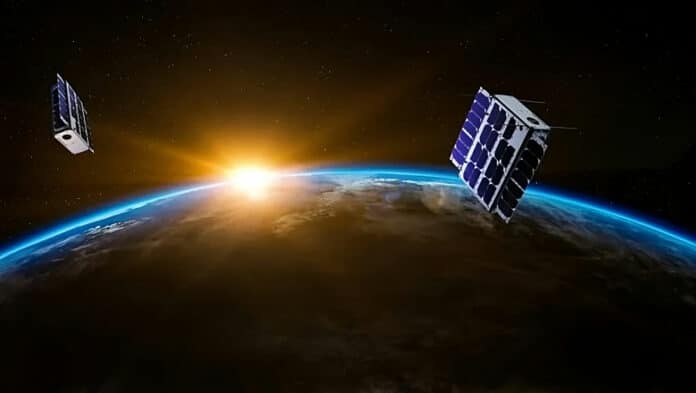The Barcelona-based startup has launched what is reportedly the first-ever 5G standard low-Earth orbit (LEO) satellite to democratize access to the Internet of Things.
Called “The GroundBreaker,” the satellite is the first piece of a future constellation of 250 nanosatellites designed to communicate with terrestrial cell towers and fill gaps in data networks worldwide.
A Falcon 9 rocket launched the satellite from SpaceX’s launch facility at Vandenberg Space Force Base in California after three failed attempts due to weather conditions. The Barcelona-based company sees the technology as an opportunity for a global realization of access to the Internet of Things (IoT).
Users can seamlessly switch from a terrestrial to a non-terrestrial 5G network, with no need to purchase any extra hardware, such as antennas or modems. Also, thanks to the standard roaming agreements carried out by Sateliot, the users can keep using their current sim cards and mobile operators.
Weighing just 22 pounds (10 kilograms), The GroundBreaker can cover an area three times as big as Texas, and it takes approximately 90 minutes to complete a full Earth orbit. Manufactured by the Bulgarian CubeSat and NanoSat specialist EnduroSat, the satellite has an onboard module that allows direct NB-IoT connection for any 5G device upgraded to Rel 17 NTN. This means that a single satellite can provide global coverage and retrieve key information from the surface for commercial usage, impacting the efficiency of hundreds of industries.
Sateliot’s technology will seamlessly extend NB-IoT telecom operator’s coverage. This means the final user – with unmodified standard 5G devices – will be able to connect to terrestrial or satellite networks. Also, Sateliot’s asset-light strategy allows connectivity prices to be at a fraction of the current proposition.
The ultimate goal is to deliver connectivity everywhere and to any use case, leaving behind the idea that satellite is expensive and only for selected applications. Some use cases are logistics, agriculture, livestock, maritime, railway, aeronautics, automation, and many others, increasing productivity, savings, and ultimately growing GDPs.
The company has closed agreements with global telecommunications operators and companies and already has a sales pipeline of over €1.2 billion. The goal is to reach €1 billion in revenues and a €370 million EBITDA by 2026.
